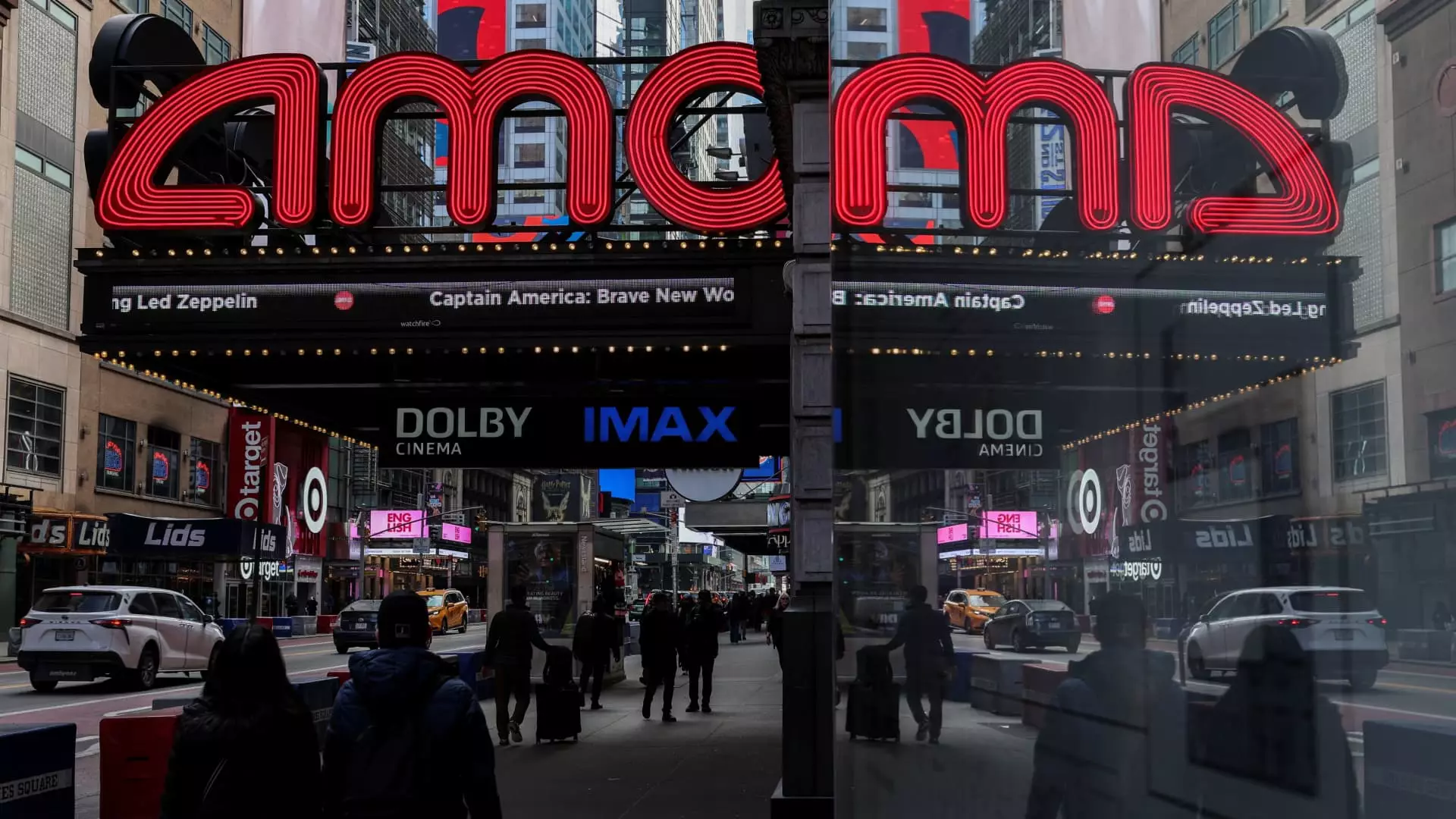In a world where entertainment options vie for our attention more fiercely than ever, it is no surprise that the cinematic landscape is undergoing a significant transformation. As Hollywood continues to churn out blockbuster after blockbuster, AMC Entertainment is responding by expanding its portfolio of premium screens. This development is not merely a reaction to consumer demand; it is a calculated maneuver that seeks to redefine the entire moviegoing experience. The decision to add 40 Dolby Cinema theaters in the U.S. by the end of 2027 signifies a bold commitment to provide audiences with top-tier immersive experiences that go far beyond the traditional big screen.
While the intention behind this expansion is commendable, we must examine the implications of this shift. The term “premium moviegoing” carries an almost romantic notion of elevated visual and auditory stimulation, but it also serves as a reminder that cinematic experiences are increasingly becoming commodified. Are we edging toward an era where the socio-economic divide dictates who gets to enjoy cinematic opulence and who is relegated to budget theaters?
Accessibility or Exclusivity?
AMC’s foray into premium large format (PLF) screens—whether it be through Dolby Cinemas, Screen X, or 4DX—signifies a trend that could alienate a swath of moviegoers who are less inclined to pay the nearly $17 average ticket price for experiences rendered essential by the blockbuster model. The allure of larger-than-life visuals and immersive effects can be intoxicating, yet the underlying question looms: is this nth degree of escapism merely a capitalist tool that separates the affluent from the budget-conscious?
The growth of PLF screens and the spike in their box office revenue—now accounting for 9.1% of the domestic market, with projections to grow—reveal a palpable contradiction. More people are experiencing the shimmering magic of cinema, yet it is increasingly confined to those willing to fork over the cash for a “premium” experience. This raises a fundamental question: Are we sacrificing the accessibility of the art form for its aesthetic enhancement?
The Blockbuster Obsession
Consider the films that drive this demand: sprawling franchises like “Avatar,” “Star Wars,” and the Marvel Cinematic Universe reign supreme. Each of these titles is engineered to generate maximum visual allure conducive to PLF formats. While there’s undeniable artistry involved, one must ponder if the rush to relegate smaller, nuanced films—as opposed to mega-budget spectacles—to standard screens ultimately dilutes the cinematic narrative.
Hollywood’s love affair with blockbusters is not without context; it’s fueled by the insatiable hunger for profits in the increasingly competitive entertainment market. However, that hunger gives rise to an inherent risk: the marginalization of diverse storytelling in favor of familiar, formulaic spectacle. It compels us to question whether cinema is still an artistic outlet or has transformed into a mere vehicle for financial gain.
Community and Cultural Loss
Cinema plays a crucial role in community building and cultural engagement. As AMC expands its number of premium screens, one cannot help but question the impact this shift has on local cultures and independent filmmakers who rely on smaller venues for their narratives. The facade of “premium experience” can dulled in the face of cultural richness that has often thrived in local theaters—spaces that provided opportunities for voices that challenge the mainstream.
In our quest for the visually stunning and sonically profound, are we not losing the very fabric of storytelling that encompasses the human experience? Layers of meaning, subtlety, and unpolished truths risk being kicked to the curb in favor of flashy aesthetics designed primarily for profit. A balance must be found—a way to celebrate and cultivate the arts without undermining the accessibility that cinema has historically ensured.
As AMC and its partners embark on this expansion, the challenge lies not only in enhancing viewer experiences but also in maintaining a commitment to inclusivity. Cinema, at its heart, should resonate across socio-economic boundaries, rather than erecting barriers forged from gilded ticket prices and extravagant environments.
The call for premium experiences in Hollywood may echo loudly, but the critical counter-narrative must persist; cinematic magic should thrive not just in visually stunning lavishness, but also in the deeply human stories that resonate with all walks of life.

Leave a Reply